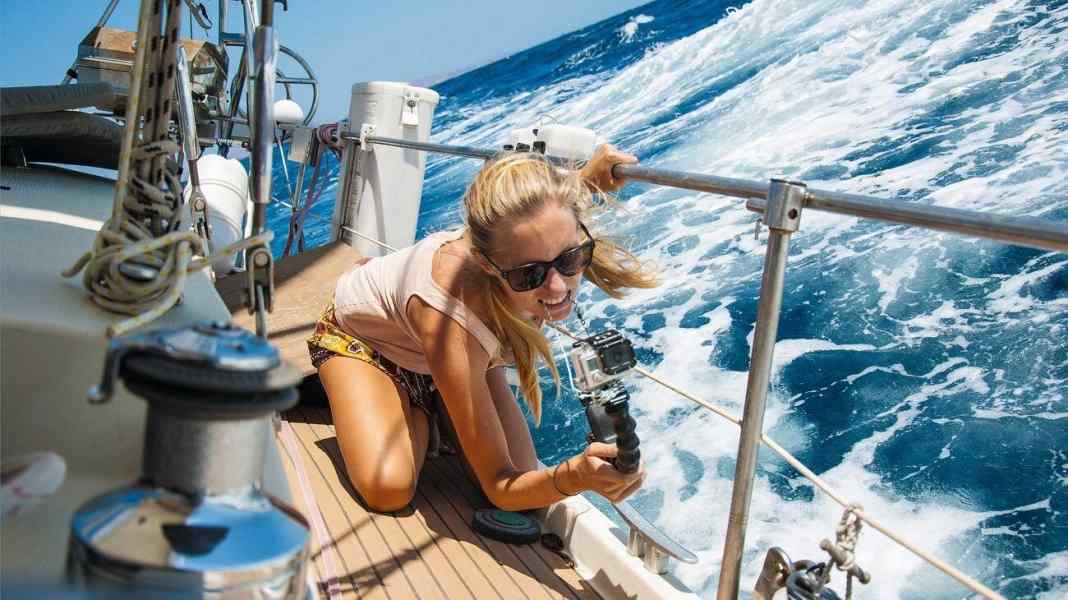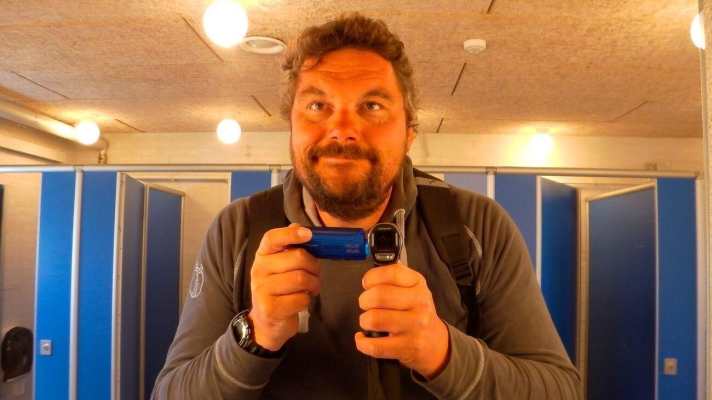
It sounds really simple: set sail, make short films about the highlights and low points of the trip, post them on your own YouTube channel on the Internet and use them to fill the on-board cash box for the long voyage. More and more sailors are doing just that and their video diaries are flooding the web.
Read the report to find out how this works, how much work is involved and whether sailing is still fun when the camera is always with you in the new YACHT 7/2018, which goes on sale on Wednesday and can be pre-ordered here. We are already showing the YouTube channels of sailors with the most clicks.
6th place in the sailing vlogs: "White Spot Pirates": Nike Steiger and "Karl", approx. 9 million video views to date.
From 18 May 2018, the second season of the 37-year-old from Lüneburg will also be available in German every Friday on www.yacht.de/tv to see.
5th place among sailing vlogs: "Sailing Doodles", approx. 12 million video views to date
4th place among sailing vlogs: "Sailing Nandji", approx. 13 million video views to date
3rd place among sailing vlogs: "Gone with the Wynns", approx. 29 million video views to date
2nd place among sailing vlogs: "Sailing La Vagabonde", approx. 59 million video views to date
Number 1 in sailing vlogs: "Sailing SV Delos", approx. 76 million video views to date

Single-handed sailor Guido Dwersteg has made a name for himself in the sailing film scene with films about his trips. He offers his travel documentaries on the internet, some for free, some for sale. The 48-year-old has undertaken two major solo trips so far: From 2012 to 2014, he sailed around the Atlantic, camera always with him, and released six one-hour films about the trip.
The camera was once again on board his Bavaria 32 Holiday "Carpe Diem" on his most recent trip, a 3500 nautical mile cruise through Northern Europe - across the Baltic Sea, through Russian inland waters and along the North Cape around Scandinavia. Dwersteg is currently releasing a series of seven films about the adventure.
YACHT spoke to the sailor from Koblenz about the effort, motivation and taboos of filming on a cruise.
YACHT: Mr Dwersteg, why do you make films of your trips?
Guido Dwersteg: On the one hand, I used to watch what other sailors were showing on YouTube myself. But the original idea was to document the trips for myself. I then posted small video snippets on the internet. That developed a momentum of its own. But at the beginning I never planned to make big documentaries of my trips.
Do you have a kind of film script? Do you think in the morning about what should happen during the day and what you want to film?
No, there is no script. The trick is to make an interesting and entertaining story out of what you have. I reconstruct concise moments with the help of the logbook. You can't show everything, otherwise a film would take four weeks. But what I film happens spontaneously, authenticity is the keyword.
How many cameras do you have on board?
There are now five of them. One Gopro is permanently installed at the stern for the long shots of the boat. One is always ready to hand at the bottom of the navigation table, another under the sprayhood. The others are used as spares. It's important to remember that cameras on board have a short half-life. Sailing is not exactly the ideal environment for technology.
Filming is by no means the end of the story. How time-consuming is it to edit and finish a one-hour film?
That's a lot of work. I've become faster over time. I now only need one to two hours on average for one minute of film, including music and with the text discussed.
Where did you get the expertise for this?
I come from the IT industry, so it's not difficult to familiarise myself with software. And that's how I fumbled my way into the necessary creativity. Today, even total rookies can teach themselves how to edit film, it's become quite easy.
So can any sailor produce a good sailing film or sailing vlog?
It's a matter of practice. As soon as people speak into a camera, many become more relaxed. You really have to get into it, get used to it and practise the selfie settings, especially at the beginning. It can take a lot of effort to really want to achieve a good result.
Can you live off the income your films generate?
In the meantime, sailing has actually become something like my main job. But it would be difficult to make a living from the films alone. However, they make up a large part of my income.
What do you think of the model of the weekly long-distance video blog, as currently published by dozens of long-distance sailors who also generate income on crowdfunding sites?
On an international level, and especially in the USA, this may work well. There, the willingness to give the creators of vlogs money for their episodes is simply much greater than in Germany, for example. But with a weekly rhythm, you are of course also condemned to publish something every week.
Back to your films: do you ever find it annoying that you almost always have your camera with you when you're out and about?
No. As I sail alone, I've always found it nice and pleasant, as the camera is a bit of a substitute for the missing other person. When I'm sailing, however, safety is clearly the priority, so you rarely see storm footage. And of course there are days when I don't feel like filming at all. I might say something into the camera briefly in the morning to stay "in the flow". But if I'm not in the mood, I'm not in the mood.
Are there any taboos? Something you would never show?
Well, I wouldn't jump around naked in front of the camera(laughs). There are limits, of course, and I'm considerate if someone doesn't want to appear in front of the camera, like my girlfriend, for example. But in an authentic documentary, it's important that what you show corresponds to reality. And that also means that not everything is always sunshine and roses.
A major interview with Guido Dwersteg about his 3500-mile journey, including sailing around the North Cape, was published in YACHT 3/2018.
Guido Dwerstegs Youtube channel and Website.

